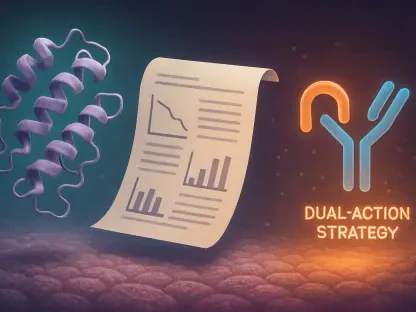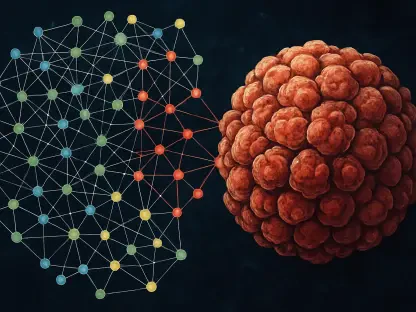Sepsis, a critical and often fatal condition resulting from the body’s response to an infection, continues to pose significant challenges in both diagnosis and treatment. Researchers are increasingly focused on understanding the pivotal role of autophagy-related genes in sepsis, aiming to improve clinical outcomes and potentially save lives. The investigation of these genes promises new diagnostic markers and therapeutic approaches which may revolutionize the way sepsis is managed in the clinical setting.
Introduction to Sepsis and Autophagy
Sepsis is characterized by widespread inflammation due to an infection that leads to organ dysfunction and high mortality rates. Contemporary research suggests that maintaining cellular homeostasis through autophagy could be crucial in the pathology of sepsis. Autophagy is a cellular degradation process that helps in removing damaged mitochondria and proteins, playing a vital role in immune response and cellular health. Understanding how autophagy-related genes operate within this framework could provide unprecedented insights into better diagnostic tools and treatment methods for sepsis.
The study of autophagy-related genes in the context of sepsis is particularly compelling because of their dual role. Initially, autophagy helps to mitigate inflammation by degrading harmful cellular components; however, excessive autophagic activity in the later stages can become harmful. This dual nature demands a delicate balance, which is essential for improving sepsis outcomes. The promising potential of tapping into these genes for clinical applications is further explored through comprehensive bioinformatic analyses and clinical validation.
Dataset and Differential Gene Expression Analysis
To delve deeper into the role of autophagy-related genes in sepsis, researchers employed three datasets—GSE154918, GSE32707, and GSE54514—sourced from the Gene Expression Omnibus (GEO) database. These datasets include standardized gene expression profiles from sepsis patients and healthy controls, forming a robust foundation for differential gene expression analysis.
Through this analysis, 14 pivotal mitochondrial autophagy-related genes were identified: HIF1A, HTRA2, ATG7, ATG9A, ATG12, MAP1LC3A, MAP1LC3B, PGAM5, SQSTM1, TOMM20, TOMM40, UBA52, HUWE1, and VPS13C. These genes exhibited significant differences in expression between sepsis patients and healthy controls, highlighting their potential as key players in sepsis pathology. By pinpointing these genes, researchers are mapping out new avenues for more accurate diagnosis and tailored therapeutic approaches for sepsis.
Functional and Pathway Enrichment Analysis
Once the key genes were identified, they underwent Gene Ontology (GO) and Kyoto Encyclopedia of Genes and Genomes (KEGG) pathway analyses to elucidate their biological functions and pathways. These analyses revealed that the identified genes play crucial roles in several significant pathways, including mitochondrial autophagy, mitophagy, ferroptosis, and NOD-like receptor signaling.
Understanding these pathways is paramount to deciphering the role of autophagy in the pathology of sepsis. Mitochondrial autophagy and mitophagy are especially significant because they help in removing damaged mitochondria, thereby preventing excessive inflammation and cell death. Additionally, the involvement of ferroptosis—a regulated cell death process—and NOD-like receptor signaling further underscores the complex interplay between cellular health and immune responses during sepsis. These findings provide a detailed roadmap for potential therapeutic targets, enhancing the precision of future interventions.
Diagnostic Models and Machine Learning
To develop robust diagnostic tools, machine learning techniques such as Random Forest (RF) and Artificial Neural Networks (ANN) were employed. These advanced models aimed to predict sepsis based on gene expression profiles, offering a technologically sophisticated approach to addressing the condition.
The diagnostic models were validated using receiver operating characteristic (ROC) curve analysis, and the results demonstrated high accuracy and specificity. This validation process underscores the reliability and clinical potential of these models. The ability to diagnose sepsis early and accurately can lead to timely interventions, thereby significantly improving patient outcomes. The application of machine learning in this context not only exemplifies the fusion of bioinformatics and clinical practice but also sets the stage for future innovations in sepsis diagnosis and treatment.
Immune Cell Infiltration Analysis
Immune cell infiltrations were meticulously analyzed using the CIBERSORT and ssGSEA algorithms to explore the relationship between gene expression and immune cell types. This comprehensive analysis revealed significant correlations between the key genes and various immune cells, providing deeper insights into the immune response in sepsis.
One notable finding was the pivotal role of activated dendritic cells, which highlights the substantial interplay between immune response and autophagy in sepsis. Understanding the dynamics of immune cell infiltrations can pave the way for developing immune-modulating therapies, potentially altering the course of sepsis treatment. This insight into the immune landscape of sepsis patients adds a critical dimension to the ongoing exploration of autophagy-related genes.
Molecular Typing and Subtyping
An important aspect of the research involved consensus clustering, which identified two distinct molecular subtypes of sepsis based on the expression of the 14 key genes. Each subtype displayed unique patterns of immune cell infiltration and gene expression, offering a more personalized approach to sepsis management.
Recognizing these molecular subtypes allows for tailored treatment strategies that are aligned with individual patient profiles. This stratification can optimize therapeutic outcomes by ensuring that treatments are specifically suited to the underlying molecular characteristics of a patient’s sepsis. The ability to classify sepsis into distinct subtypes is a significant advancement that underscores the heterogeneity of the condition and the necessity for personalized medicine.
Clinical Validation of Key Genes
To ensure the practical applicability of their findings, researchers conducted quantitative PCR using clinical specimens. This step was crucial in validating the differential expression of the identified genes, confirming their relevance and reliability as biomarkers.
Clinical validation ensures that the biomarkers identified through bioinformatic analyses are genuinely reflective of physiological conditions seen in sepsis patients. These validated biomarkers can significantly enhance clinical diagnostics, providing a reliable tool for early detection and intervention in sepsis. The translation of these findings from the research lab to clinical settings underscores the practical importance of identifying autophagy-related genes in sepsis.
Comprehensive Framework for Future Strategies
Sepsis is a severe and often life-threatening condition caused by the body’s extreme response to an infection. This crisis continues to pose significant challenges in both its diagnosis and treatment. Researchers around the world are increasingly concentrating on the role of autophagy-related genes in the context of sepsis. Their focus is on these genes because they believe understanding their role could lead to substantial improvements in clinical outcomes, ultimately saving more lives.
Autophagy, a process by which cells degrade and recycle their components, is crucial in how the body responds to infections. Researchers are examining how these genes can be used as new diagnostic markers, offering better and faster identification of sepsis. This could allow for earlier intervention, which is critical given sepsis’s rapid progression. Additionally, these genes might open up new therapeutic approaches, potentially revolutionizing treatment protocols.
The promise of this research is significant. By identifying specific genetic markers and understanding their pathways, medical professionals can tailor treatments to individual patients’ genetic profiles, leading to more effective and personalized care. As the understanding of autophagy-related genes deepens, it holds the potential to transform the current sepsis management strategies in clinical settings, making a major leap towards lowering mortality rates associated with this condition.









